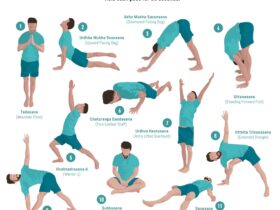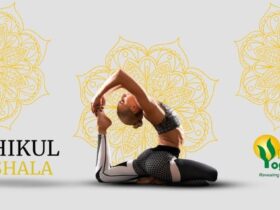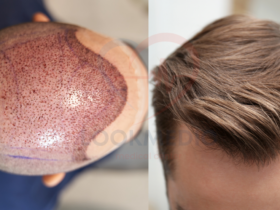Athletic performance is not solely dependent on natural talent and rigorous training—what you wear and the equipment you use play a significant role in both safety and success. Proper gear is essential for protecting athletes from injury, enhancing comfort, and optimizing performance. Whether you’re a professional athlete or someone who enjoys recreational sports, understanding how to select and use the right gear can make a huge difference. From footwear to protective devices, every piece of equipment is designed to support your body, improve your performance, and reduce the risk of injury.
In this article, we’ll explore how proper gear contributes to improving athletic performance across different sports and activities, highlighting its role in protection, comfort, and performance enhancement.
1. Footwear: The Foundation of Performance
The importance of proper footwear cannot be overstated. Whether you’re running, playing basketball, or competing in soccer, the right pair of shoes ensures that you have the stability and support you need. Wearing sport-specific shoes that are tailored to your activity helps improve your performance and prevent injuries such as sprains, strains, and stress fractures.
Running Shoes:
Running shoes are designed to cushion the impact of each stride while providing the necessary support for your arches and ankles. The right running shoes help you maintain proper posture, reduce fatigue, and improve your overall performance. Additionally, they can help prevent common injuries like shin splints, plantar fasciitis, and knee pain by absorbing shock and providing stability.
Basketball Shoes:
Basketball involves a lot of jumping, quick movements, and lateral shifts, so having a shoe that provides ankle support is crucial. Basketball shoes are specifically designed with high-top structures and grip patterns that provide stability, reduce the risk of ankle sprains, and improve traction on the court. These shoes also offer cushioning to help absorb the force when landing from jumps, thereby improving overall performance.
Soccer Cleats:
For soccer players, the right pair of cleats is essential for maximizing traction, which helps with acceleration, stability, and agility. Soccer cleats come in various types depending on the surface you play on (firm ground, soft ground, or artificial turf). Properly fitted cleats help you maintain speed and avoid slipping, while also supporting your feet during intense movements like pivoting and quick direction changes.
2. Protective Gear: Safety and Confidence
In many sports, the risk of injury is inherent, especially in contact sports like football, hockey, and rugby. Protective gear, such as helmets, pads, mouthguards, and braces, can make a significant difference in preventing injuries and boosting confidence in athletes.
Helmets:
Helmets are vital for protecting your head during activities where impacts or falls are frequent, such as cycling, football, or skiing. A well-fitting helmet can prevent serious head injuries like concussions, which can have long-term effects on an athlete’s health. For instance, in football, a helmet provides protection against both blunt-force trauma and collisions. The advancement in helmet technology has made it possible to reduce impact forces, helping protect the brain during high-speed impacts.
Mouthguards:
A mouthguard is an essential piece of equipment for contact sports, including boxing, football, and basketball. It helps protect the teeth and gums from injury during collisions and falls, reducing the risk of broken teeth or oral trauma. But the benefits of a mouthguard go beyond just dental protection—many also provide a level of jaw support, which can help reduce strain from clenching during intense physical activity. Some custom mouthguards are even designed to support proper jaw alignment, which can help alleviate tension in the jaw and neck, improving overall comfort during sports.
Pads and Guards:
Pads are used across various sports for protection against falls, tackles, or impacts. In sports like football, hockey, or rugby, players wear shoulder pads, knee pads, elbow pads, and shin guards to protect sensitive areas from injury. These pads help distribute the force of a hit or fall over a wider area, which reduces the potential for bruises, sprains, fractures, or other severe injuries.
Braces and Supports:
For athletes with prior injuries or those who are at risk of certain conditions, wearing braces and supports can make a significant difference. Knee braces, ankle supports, and wrist guards are examples of gear that can prevent re-injury, reduce strain, and provide stability to joints during high-impact sports. Whether you have a previous injury or are looking to prevent one, these supports help keep you in action longer and more safely.
3. Compression Gear: Improving Circulation and Reducing Fatigue
Compression gear, such as socks, sleeves, and shorts, has become increasingly popular among athletes. These garments apply gentle pressure to specific areas of the body, enhancing circulation and reducing muscle fatigue. Compression gear helps to increase blood flow, which in turn improves the delivery of oxygen and nutrients to muscles during exercise. It can also aid in the recovery process by reducing lactic acid buildup, decreasing swelling, and minimizing muscle soreness post-activity.
Compression Socks:
For runners, cyclists, and athletes who engage in endurance sports, compression socks can make a significant difference in reducing muscle fatigue and improving recovery time. The increased blood circulation helps flush out metabolic waste and reduce the risk of swelling in the legs, making long runs or intense workouts less taxing on the body.
Compression Sleeves and Shorts:
Compression sleeves for arms and legs, as well as compression shorts, can help improve muscle performance during activities that require explosive movement. These garments support muscles and joints, preventing excessive vibration that can lead to muscle fatigue and strain. They also promote faster recovery by minimizing delayed onset muscle soreness (DOMS).
4. Apparel: Comfort and Performance Enhancement
The clothes you wear during physical activity can have a big impact on your performance. Proper athletic apparel should be designed to provide comfort, freedom of movement, and moisture management. Fabrics like moisture-wicking materials help to keep sweat away from your skin, ensuring that you stay dry and comfortable throughout your workout or game.
Breathable Fabrics:
Athletic wear made from breathable, lightweight materials allows air to circulate, helping to regulate body temperature. This is especially important for sports performed in hot conditions, such as running, cycling, or outdoor team sports. Staying cool and dry helps improve focus, comfort, and overall performance.
Compression Tops and Shorts:
Similar to compression gear for the legs and arms, compression tops and shorts support the torso and abdominal area. They help improve posture, reduce muscle strain, and prevent overheating by enhancing moisture control. For athletes who engage in weightlifting, sprinting, or other high-intensity activities, these garments can provide both performance and recovery benefits.
5. Sports-Specific Gear: Tailoring Protection and Performance
Different sports require specialized gear to optimize performance and ensure safety. For example, in swimming, wearing the right swimsuit and swim cap can reduce drag and improve your speed in the water. For cyclists, having a bike that fits well and using a properly adjusted helmet can prevent injuries and enhance overall performance on the road.
Swim Gear:
A streamlined swimsuit and swim cap reduce drag and resistance, allowing swimmers to glide through the water more efficiently. Goggles help protect the eyes from chlorine while providing clear vision underwater. Swimmers who invest in quality gear will likely experience a noticeable improvement in their speed and endurance in the pool.
Cycling Gear:
For cyclists, ensuring that your bike is the correct size and properly adjusted is critical for optimal performance. Proper cycling shoes, gloves, and a helmet provide comfort, support, and safety. Whether you’re riding on the road or the trails, the right gear can make a noticeable difference in speed, comfort, and injury prevention.
6. Technology: Enhancing Performance with Wearable Devices
Advancements in technology have led to the creation of wearable devices that provide real-time data about your performance. Smartwatches, fitness trackers, and heart rate monitors allow athletes to track their performance metrics, monitor recovery, and adjust their training accordingly. These devices give you insight into your physical state, helping you avoid overtraining and optimize your routine for peak performance.
Smartwatches and Fitness Trackers:
These devices track key metrics like heart rate, steps taken, calories burned, and distance traveled, providing valuable feedback that can be used to adjust workouts. They can also alert you when it’s time to take a break or rest, which helps in preventing overuse injuries and ensuring balanced training.
Conclusion
Proper gear is essential for any athlete looking to improve their performance, protect themselves from injuries, and maximize their potential. From well-fitting shoes to protective equipment, compression gear, and technology, investing in the right gear tailored to your specific sport can make a significant difference in both safety and performance. With the right combination of protective and performance-enhancing gear, you can enjoy your sport while minimizing the risk of injury and getting the most out of your training. So, gear up and get ready to perform at your best!
In conclusion, the right gear is a key factor in unlocking an athlete’s full potential, whether you’re a professional or a weekend warrior. Proper footwear, protective equipment, compression gear, and technology not only safeguard against injury but also enhance comfort, performance, and recovery. By carefully selecting and utilizing the gear specific to your sport, you set yourself up for success and longevity in your athletic journey. So, whether you’re aiming to prevent injuries or improve your performance, investing in the right equipment is essential for reaching your goals and performing at your best. Stay protected, stay comfortable, and watch your performance soar!







Leave a Reply